I willfocused on a Cyborg/Stinger comparison but might as well get this out of the way first.Most obvious comparison for similar performanceis the PetzlDart at 840g per pair. The BD Stinger is 910g per pair on my scale.
For the 70g (2.5 oz) you get a easy replaceable and inexpensive front point,
(likely the best improvement over the Dart)a pair of mini secondary front points (that are suppose to grow in the production version), full antibots front and back, mid sole traction of sorts for hard iceand stainless. The foot print isvery closein size (virtually the same) on the Dart and Stinger. And I have accused the Dart and Dartwin as being "roller skates" on moderate ice.
I don't like either there and would expect the Stinger to be just as dismal on that kind of terrain.The Stinger seems to "cut" a little better from my own use. The secondary points will allow me to use them on more ice routes than limiting them tojust mixed where I would use the Darts now. None of theseare a "beginner crampons" or something I'd suggest as your only crampon.. It is the right direction, but still ageneration or two to go before I'll be totally happy:)

 Before you read any further this pair of pre-productionBD Stingers arethe1st piece of gear to be reviewed here on Cold Thistle that I have been loaned.So YMMV, but by all means, "Caveat emptor".
Before you read any further this pair of pre-productionBD Stingers arethe1st piece of gear to be reviewed here on Cold Thistle that I have been loaned.So YMMV, but by all means, "Caveat emptor". I don't write about kit that I don't like so obviously I like these new Black Diamond crampons. And againno matter who's blog...if theyare given the sheet...bewareof the review...even mine.
Caveat emptor!It should be obvious if you read the blog that I am none to happy with the state of modern boots and crampons. Twight says and rightfully so, "you can't get around in the mountains without crampons".
And I say in the last 30 yearsthe boots and crampons haven't improved much. That might be a little over stated as both crampons and boots have improved a lot...but I bitch andpush for even better gear where it is so easy to improve. Crampons are easy to improve.
I'd bet it is no surprise that in my spare time I write what I hope are constructive comments to folks at Petzl, BD or La Sportiva for example hoping that small things might get changed. I suspect the company receiving them round files the commentsandjust might refer to them as "nasty grams". Even though I am always polite.
I figure why not...I have nothing to loose from a suggestion.
I am an equal opportunity crampon guy. I like them all. Darts, Dartwins, G12s, M10s, Sabertooth or Cyborg, they all climb well. Just thatfewof them climb pure ice as good asthe last version of the Chouinard/Salewa or SMC rigid. Kind of an old and sad secret really.
Only thing still resembling a Footfang is the current Grivel Rambo.
1978 Haderer single leather boots, Chouinard Zero,a Terrordactyl an SMC rigids...Canadian Rockies ice.

1980 North Buttress of Mt Hunter, Kolfach Ultras and SMC rigids again.

And more recent Dartwins, on Curtain Call, Feb

Grivel G12s on a WI5+

BD Serac on WI4, in the Ghost, Nov

Just an idea of how impressed I am with any one crampon or brand of crampons. They all seem to work.
But all of them could also be better.
Thisis a want list I recently sent to BD after spending a few days climbing on Cyborgs again. And I think the BD Cyborgs is a very good crampon although on the heavy side of what is available.
"I figure somewhere there @ BD you have a plan to update the Cyborg. My thoughts on the Cyborg if so. I'd tighten up the connecting bar interface as you have the Sabertooth and the Serac. I'd go even tighter and make it a .0005" +/- over. Hard to move and adjust but added rigidity to the crampons worth while I think and you still have the option of a spring bar if they aren't using rigid boots..easy to cover in the brochures. Since you are already doing a second connecting bar....you'll have some options. But I wouldn't go to a thinner stock on your new bail. I've been rethinking that. Problem with the thin Petzl bail is reliability and work hardening in the stainless as we suspect. I would not go to a thinner bail but a much "thinner width" bail on a thinner width crampon forefoot. A more narrow bail would solve many of the actual fit problems. I know you haven't missed what Grivel has done on the G20 and G22 bails and forefoot. It won't take much in width. Then you can use the weight savings there to add a bit of length to the forfoot piece. As much as you think you can get away with and still fit tiny boots. But the size of the forefoot *foot print* seems way too smallcurrently. I think it needs to be longer. But that is going to take a new computer drawing of the forefoot. It won't take much to make a big difference. The older wider bails will still fit the dbl boots like the Spantik and over boots as required. The one thing that really shows on the Cyborg trying to fit the newer boots (classic example is the Spantik's rocker and I'd bet the Nepals as well) is the lack of rocker on the Cyborg. You could easily dbl the amount of rocker in the Serac and Sabertooth which is good and really helps the over all fit and be fine on most any boot I suspect. And they would fit so much better over all on others. I think you would be better off on a technical crampon to reduce the size of the first two verticals and move the second pair back a bit more like a Sabertooth front than what you are running now on the Cyborg. Equal length points are easier to mix climb in. And you aren't going to loose anything on technical ice with your forged front points. Just mate the first pair of points up and have them hit a the surface when sitting on a flat. I am not explaining this well. Easy to see if you set a Serac, Saber and Cyborg front piece on a flat. Take a Serac, add the 3rd set of full size teeth from the saber (1st vertical pair supporting the front) narrow up the forefoot a bit and add Cyborg fronts. Then build a narrow forefoot bail of the same material you are using now. Then just do a aggressive lightening job with aggressive profiling on the teeth sides. Easy enough when you cut them out of the plate. I'd bet from looking at it you could do all that and drop some significant weight on the Cyborg."
OK! What am I asking for...short version? Bails that fit the new boots, a bigger foot print on the bottom of your boot, and more rocker in the forefoot. A more rigid inner face between front and rear crampon parts..more rigid. Smaller main points on the crampon, easier to climb mixed and easier to walk in. What I wasn't interested in was a technical crampon that was mono point specific.
Hopefull ythe back groundwill all make more sense in a minute. Dare to read on.
The new Black Diamond Stinger
The one thing that I really miss on the newest crampons is a "cutting edge". By that I mean a set of side points (front to back) that easily allow you to kick a step on hard ice to splay your feet out and get off your calves. In the old days with a straight shafted toolyou could do it with one or two swings, pick or adze. Even the original carbon fiber Cobra could handle that job adroitly. Current Cobra will do it if you don't stick the pick...but an adze is pretty useless in a reversed grip. Quark is OK. Nomic?Fusion ? Not so much. Ergo...ha, ha, hhhaaaaa! And I like my Ergos :)
Here is what I mean by a good "cutting edge". The last generationChouinard/Salewa clip on crampons. You can do some serious step cutting with the point design on these guys. Nothing I would have thought toask for but gotta say I am more than pleased to see this change in forefoot design on the new Stingers.

New Stinger goes a little retro on the third set of down points and you get a slightly bigger foot print from what theCyborg has done previous as the comparison shows. Count the lugs on the sole and look where the yellow mid sole meets up with the down points as a reference.

Stinger and Cyborg side by side. The Stinger mono point is slightly off set of center to the inside of the foot intentionally closer to the big toe. The Stinger is amono specific crampon, and
no question the designis specifically intended for hard, modernmixed climbing. BD offers other less technical crampons for pure ice that climb very well. As a "more general" crampon, if you can put a any mono specific cramponin that catagory, these have some advantages over the usual suspects imo.

Cyborg forefoot shown below. Stinger is giving almost a full lug more of coverage on my 45.5 size Spantiks shownhere. A good thing I think. Thenewdesign (really not new at all) might be a little sketchy on the down hill though with the loss of 2 "braking" points on the forefoot. I am more worried about getting up than getting down so I like the change. Never seemed to have a problem before on the older gear and no bots at that!

It gets better. As the heel piece is just a tiny bit longer as well. Again more over all foot print. At this point I am thinking BD is staffed by brilliant engineers and climbers...as we were thinking along the exact same lines. Just that they were 2 years ahead of me and my "round file" letter.
Heels. Check out the heel lever placement. The longer set is the Stinger.

Stinger

Cyborg..again check the position of the boot sole lugs. Stinger has thelonger foot print.

One of the things that has really buggedme on two piece crampon design. If you are going to fook up a perfectly good crampon design by cutting it in half and making it semi rigid...which generally just means flexible, why not at least add some working bits to the empty space between your 2 parts? If you have ever stepped up on a piece of cauliflower ice to find nothing under your foot is biting, you'll know why this one can really irk a climber.
Grivel is doing something similar on the G20 and G 22......but have to say I think the BD versionis a better solution for that issue.
This is the current Cyborg, kinda half assed into the idea

Grivel G22 a totally different way to address the same problemof traction mid foot.

This is the new Stinger which is the best solution I have seen to date on a two piece 'pon..

And a classic example why the new cuts under neath the forefootis a good thing imo. It makes a difference

So what do I think over all? The Stinger is going to ship from the factory with a flex connecting bar. I have tried both the flex and the rigid bar. No surprise what I think works better. I like the rigid bars but I also like options. The connecting bar slot is cut very tight...almost but not quite a rigid crampon with the solid bar in place. Will they be reliable?...who knows at this point but I suspect they will. BD typically over builds everything for durability. Fit? Remember these a pre-production crampons..proto types really. A third or forth round of new bails are in the works. I've seen that bail and fit ittomy Ultras. I believe they will be just as good of fit as I have now, with Petzl bails clicked in. With my Petzl bails in the crampons these are the first pair of crampons to fit my Scarpa Ultras (which a super thin bitch to fit) and my La Sportiva Spantiks (which are about as big as I will get in boot soles). The added rocker on the forefoot of the crampon makes a huge difference on fit. Any crampon that actually fits my boots I am THRILLED spitless to climb in, free or not!
Weight? BD has dropped6.5 oz per pair compared to the Cyborg with the lighter weight Stinger. Stinger is 900g or 32oz even per pair with the bot and heel strap. Good bit of that loss is just in loosing theone front point though. But we have also gained a bigger foot print and a better ability to cut a stepwith a bigger "cutting edge" and better placed down points to accomplish it.
Not a big mono fan myself, but the two secondary front points are being enlarged on the production model which gives me hope. More coining is being added to make the forefooteven more rigid. The down points may be shortened a tiny bit more to make them even more rigid.No question I like having the chance to replace a worn set of front points withforged replacement parts that are cheap to replace. Over all I like the Stinger crampona lot. Things I really like...more rocker in the crampon, more rigid crampon by design and a much, much better fit on all my boots. Down side is they are monos (which may be OK if the production version's secondary front points are long enough to give some real additionalsupport) This is a pair of crampons I will likelybuynext fall when they become available in final form.
Gotta say, "thank you" to Black Diamond for allowing me to introduce the Stinger to the world on Cold Thistle.
WI5, SLC, Jan

 The Map: To be honest, I don't think there will be any genealogical treasures within, but it is labeled "Cards, Letters, Misc" and the lord only knows what is included in miscellaneous! So, I'll sort through everything to see what I have and determine whether it should be kept or if it should be discarded. I can only hope that it will contain something worthy of sharing!
The Map: To be honest, I don't think there will be any genealogical treasures within, but it is labeled "Cards, Letters, Misc" and the lord only knows what is included in miscellaneous! So, I'll sort through everything to see what I have and determine whether it should be kept or if it should be discarded. I can only hope that it will contain something worthy of sharing!










 It gets better. As the heel piece is just a tiny bit longer as well. Again more over all foot print. At this point I am thinking BD is staffed by brilliant engineers and climbers...as we were thinking along the exact same lines. Just that they were 2 years ahead of me and my "round file" letter.
It gets better. As the heel piece is just a tiny bit longer as well. Again more over all foot print. At this point I am thinking BD is staffed by brilliant engineers and climbers...as we were thinking along the exact same lines. Just that they were 2 years ahead of me and my "round file" letter. Stinger
Stinger Cyborg..again check the position of the boot sole lugs. Stinger has thelonger foot print.
Cyborg..again check the position of the boot sole lugs. Stinger has thelonger foot print. One of the things that has really buggedme on two piece crampon design. If you are going to fook up a perfectly good crampon design by cutting it in half and making it semi rigid...which generally just means flexible, why not at least add some working bits to the empty space between your 2 parts? If you have ever stepped up on a piece of cauliflower ice to find nothing under your foot is biting, you'll know why this one can really irk a climber.
One of the things that has really buggedme on two piece crampon design. If you are going to fook up a perfectly good crampon design by cutting it in half and making it semi rigid...which generally just means flexible, why not at least add some working bits to the empty space between your 2 parts? If you have ever stepped up on a piece of cauliflower ice to find nothing under your foot is biting, you'll know why this one can really irk a climber.




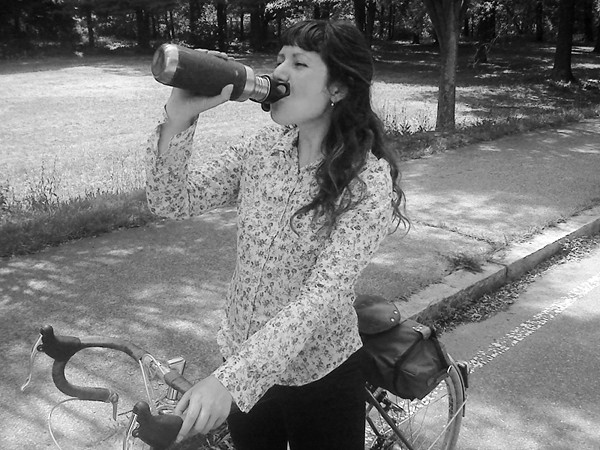 Good thing the Co-Habitant had those two bottles on his bike, because the heat and humidity were brutal. In Vienna I had gotten used to taking many short trips throughout the day and almost forgot that "commuting" and "errands" in Boston are a bit different. But I am clearly in better shape now than I was even a couple of months ago: The 18 mile round trip to
Good thing the Co-Habitant had those two bottles on his bike, because the heat and humidity were brutal. In Vienna I had gotten used to taking many short trips throughout the day and almost forgot that "commuting" and "errands" in Boston are a bit different. But I am clearly in better shape now than I was even a couple of months ago: The 18 mile round trip to 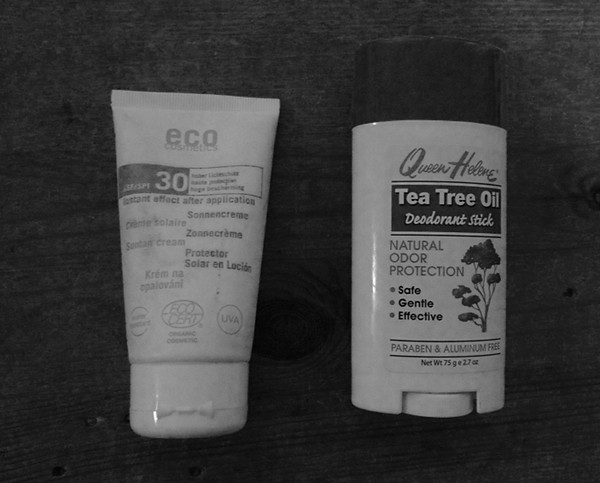 As for the sun and heat, these are my solutions. Over the past year, I have been trying to switch to natural hygiene products: essential oils instead of perfume, herbal deodorant instead of aluminum-based antiperspirant, and mineral-based sunblock. It has not been easy. In Vienna I've finally found
As for the sun and heat, these are my solutions. Over the past year, I have been trying to switch to natural hygiene products: essential oils instead of perfume, herbal deodorant instead of aluminum-based antiperspirant, and mineral-based sunblock. It has not been easy. In Vienna I've finally found 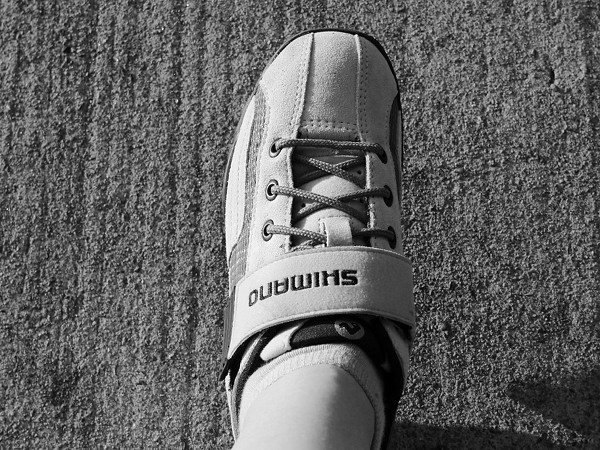 At
At They are SPD shoes that can be worn either with cleats attached on clipless pedals, or as regular shoes on platform pedals. I know, I know - I was just making fun of the Co-Habitant for getting clipless shoes and pedals. But I will explain that these aren't for any of my regular bikes; they are to practice for the velodrome (I plan to get a license when I return to Vienna in November). I brought a vintage frame back from Austria for fixed gear conversion, and I will need to put a foot retention system on it and finally force myself to learn. I did not plan to buy the shoes so soon, but here they were in just my size and at a great price - so now I have them.
They are SPD shoes that can be worn either with cleats attached on clipless pedals, or as regular shoes on platform pedals. I know, I know - I was just making fun of the Co-Habitant for getting clipless shoes and pedals. But I will explain that these aren't for any of my regular bikes; they are to practice for the velodrome (I plan to get a license when I return to Vienna in November). I brought a vintage frame back from Austria for fixed gear conversion, and I will need to put a foot retention system on it and finally force myself to learn. I did not plan to buy the shoes so soon, but here they were in just my size and at a great price - so now I have them. Clipless shoe love? I don't know. The Co-Habitant was victorious as I made my purchase, suggesting which pedals I should get to go with the shoes (and me vehemently disagreeing). Later in the day, I wore the shoes (without cleats) on a 26 mile ride, just to see how they felt or regular pedals. Frankly, I am not in love with the super-stiff soles. I like moderately stiff soles, but these felt like overkill and detracted from comfort. Is this degree of stiffness an acquired taste that you get used to gradually? And I wonder whether the "ugly as sin but comfortable"
Clipless shoe love? I don't know. The Co-Habitant was victorious as I made my purchase, suggesting which pedals I should get to go with the shoes (and me vehemently disagreeing). Later in the day, I wore the shoes (without cleats) on a 26 mile ride, just to see how they felt or regular pedals. Frankly, I am not in love with the super-stiff soles. I like moderately stiff soles, but these felt like overkill and detracted from comfort. Is this degree of stiffness an acquired taste that you get used to gradually? And I wonder whether the "ugly as sin but comfortable" 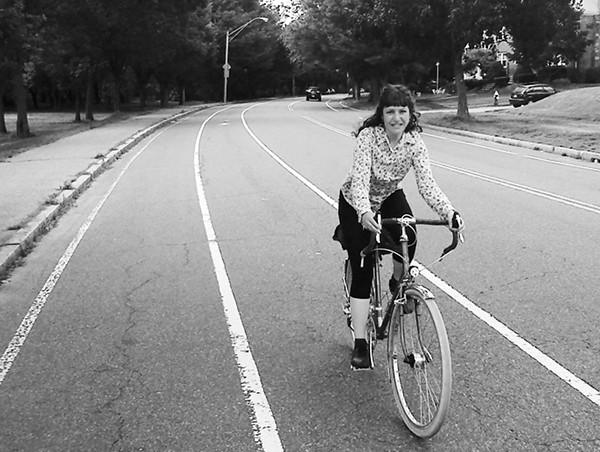 In any case, I have my bike project plate so full at the moment, that it is comical. In the coming weeks, we will finally build up my Royal H mixte, make some much-anticipated updates to my Raleigh DL-1, and oh yes, create a fixed gear bicycle. Stay tuned, and try to stay sane in the heat!
In any case, I have my bike project plate so full at the moment, that it is comical. In the coming weeks, we will finally build up my Royal H mixte, make some much-anticipated updates to my Raleigh DL-1, and oh yes, create a fixed gear bicycle. Stay tuned, and try to stay sane in the heat!

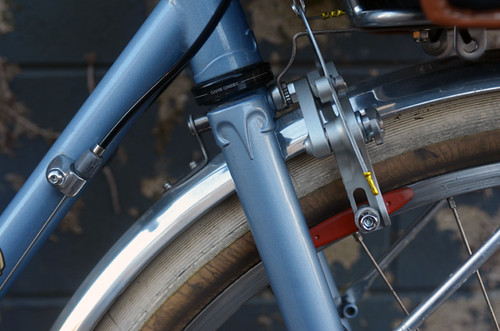

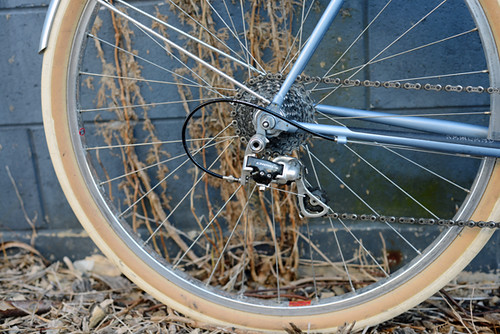
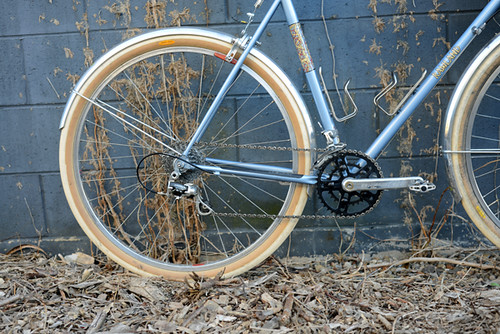
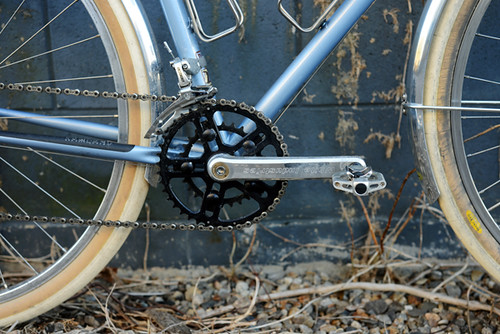



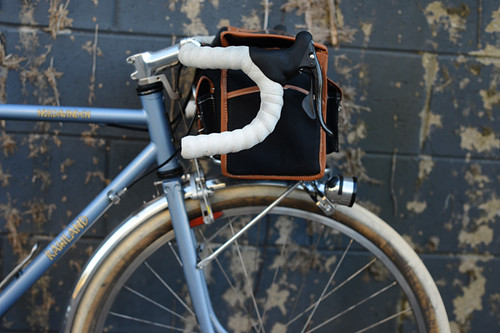
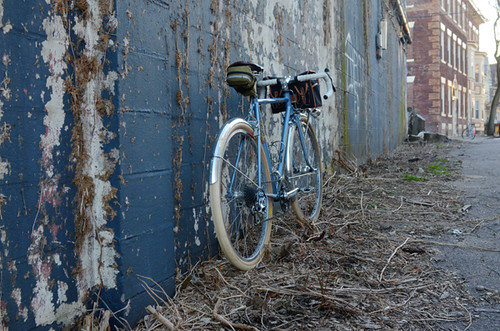

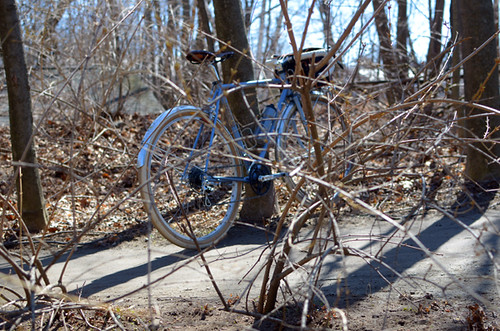
 While in Corning, we stopped at the Corning Museum of Glass.
While in Corning, we stopped at the Corning Museum of Glass. We were not there for very long, but what we did see was great. We loved this:
We were not there for very long, but what we did see was great. We loved this: 






